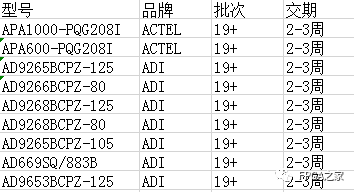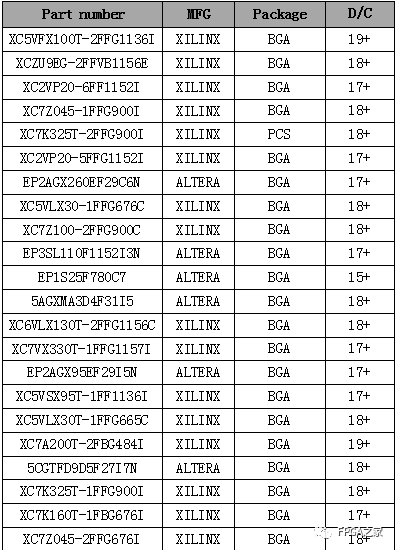Welcome FPGA engineers to join the official WeChat technical group.
Clickthe blue textto follow us at FPGA Home – the best and largest community for pure FPGA engineers in China.

The code comments are a bit rushed, please criticize any incorrect comments; it is for reference only.
UART
The UART is relatively simple, so only the tx section is commented in detail, but some content is still worth learning for beginners.
1 Start bit (low level) + 8 data bits + 1 stop bit (high level, here one period of high level is chosen, but two can also be used) (no parity bit)
1. Prescale is the number of clock counts needed to complete one bit (the relationship between this, the main clock, and the baud rate can be referenced in online articles).
2. It is best to synchronize the asynchronous signals entering the UART module using the provided synchronizer.
3. It is best to synchronize the asynchronous reset signal using the provided synchronizer.
4. The baud rate can be chosen arbitrarily as long as the clock is large enough to meet the bit error rate calculation; here, 125 MHz is used.
5. The basic idea is to shift.
6. The transmission condition is handshaking.
7. If using Xilinx chips, it is recommended to use global clock resources (the method of connecting IBUFG to BUFG is the most basic way to use global clock resources).
8. This complete code uses IBUFG + BUFG.
9. Although the transmission is simple, there are still many knowledge points worth learning for beginners.
10. The public account only provides simple comments on the code.
UART Transmission Data Module
// Welcome to follow the public account: AriesOpenFPGA// QQ group: 808033307// Language: Verilog 2001
// The code comments are a bit rushed, please criticize any incorrect comments; it is for reference only.
// UART
// 1 Start bit + 8 data bits + 1 stop bit (no parity)
// Prescale is the number of clock counts needed to complete one bit (the relationship between this, the main clock, and the baud rate can be referenced in online articles).
// It is best to synchronize the asynchronous signals entering the UART module using the provided synchronizer.
// It is best to synchronize the asynchronous reset signal using the provided synchronizer.
// The baud rate can be chosen arbitrarily as long as the clock is large enough to meet the bit error rate calculation; here, 125M is used.
// The basic idea is to shift.
// The transmission condition is handshaking.
// If using Xilinx chips, it is recommended to use global clock resources (the method of connecting IBUFG to BUFG is the most basic way to use global clock resources).
// This complete code uses IBUFG + BUFG.
// Although the transmission is simple, there are still many knowledge points worth learning for beginners.
// The public account only provides simple comments on the code.
timescale 1ns / 1ps
/* AXI4-Stream UART */
module uart_tx #(
parameter DATA_WIDTH = 8
)(
input wire clk, // System clock
input wire rst, // Reset signal
/* AXI input */
input wire [DATA_WIDTH-1:0] s_axis_tdata, // Data to be sent
input wire s_axis_tvalid, // Data is ready to be sent
output wire s_axis_tready, // This module is ready to receive data
output wire txd, // UART interface
output wire busy, // Status line busy
input wire [15:0] prescale // Configuration prescale
);
reg s_axis_tready_reg = 0;
reg txd_reg = 1;
reg busy_reg = 0;
reg [DATA_WIDTH:0] data_reg = 0;
reg [18:0] prescale_reg = 0;
reg [3:0] bit_cnt = 0;
assign s_axis_tready = s_axis_tready_reg;
assign txd = txd_reg;
assign busy = busy_reg;
always @(posedge clk) begin
if (rst) begin
s_axis_tready_reg <= 0; // Slave not ready to send
txd_reg <= 1; // Transmission line high
prescale_reg <= 0; //
bit_cnt <= 0; // Bit counter initialized to 0
busy_reg <= 0; // Not busy after reset
end else begin
if (prescale_reg > 0) begin
s_axis_tready_reg <= 0;
prescale_reg <= prescale_reg - 1;
end else if (bit_cnt == 0) // Bit counter is 0
begin
s_axis_tready_reg <= 1; // Slave raises ready signal
busy_reg <= 0; // Busy signal low
if (s_axis_tvalid) // If slave is ready to receive data
begin
s_axis_tready_reg <= !s_axis_tready_reg; //
prescale_reg <= (prescale << 3)-1; //
bit_cnt <= DATA_WIDTH+1; // Count 10 times
data_reg <= {1'b1, s_axis_tdata}; //
txd_reg <= 0; // Start bit 0 (start bit tx low, stop bit high)
busy_reg <= 1; // Enter busy state after starting transmission
end
end else begin
if (bit_cnt > 1) //
begin
bit_cnt <= bit_cnt - 1;
prescale_reg <= (prescale << 3)-1; // After (prescale << 3)-1 clock counts, complete one bit shift
{data_reg, txd_reg} <= {1'b0, data_reg}; // Shift operation
end else if (bit_cnt == 1) begin
bit_cnt <= bit_cnt - 1;
prescale_reg <= (prescale << 3);
txd_reg <= 1; // Stop bit 1
end
end
end
end
endmoduleUART Reception Module (not explained in detail)
// Language: Verilog 2001
`timescale 1ns / 1ps
/* * AXI4-Stream UART */
module uart_rx #(
parameter DATA_WIDTH = 8
)(
input wire clk,
input wire rst,
/* AXI output */
output wire [DATA_WIDTH-1:0] m_axis_tdata,
output wire m_axis_tvalid,
input wire m_axis_tready,
/* UART interface */
input wire rxd,
/* Status */
output wire busy,
output wire overrun_error,
output wire frame_error,
/* Configuration */
input wire [15:0] prescale
);
reg [DATA_WIDTH-1:0] m_axis_tdata_reg = 0;
reg m_axis_tvalid_reg = 0;
reg rxd_reg = 1;
reg busy_reg = 0;
reg overrun_error_reg = 0;
reg frame_error_reg = 0;
reg [DATA_WIDTH-1:0] data_reg = 0;
reg [18:0] prescale_reg = 0;
reg [3:0] bit_cnt = 0;
assign m_axis_tdata = m_axis_tdata_reg;
assign m_axis_tvalid = m_axis_tvalid_reg;
assign busy = busy_reg;
assign overrun_error = overrun_error_reg;
assign frame_error = frame_error_reg;
always @(posedge clk) begin
if (rst) // Initialize various parameters
begin
m_axis_tdata_reg <= 0;
m_axis_tvalid_reg <= 0;
rxd_reg <= 1;
prescale_reg <= 0;
bit_cnt <= 0;
busy_reg <= 0;
overrun_error_reg <= 0;
frame_error_reg <= 0;
end else begin
rxd_reg <= rxd;
overrun_error_reg <= 0;
frame_error_reg <= 0;
if (m_axis_tvalid && m_axis_tready) // Data ready to send and ready to be sent
begin
m_axis_tvalid_reg <= 0;
end
if (prescale_reg > 0) //
begin
prescale_reg <= prescale_reg - 1;
end else if (bit_cnt > 0) begin
if (bit_cnt > DATA_WIDTH+1) begin
if (!rxd_reg) // Actual read is 0, start counting bits
begin
bit_cnt <= bit_cnt - 1;
prescale_reg <= (prescale << 3)-1; // Prescale is 16 bits shifted 3 bits minus 1 bit, because prescale_reg
end else begin
bit_cnt <= 0;
prescale_reg <= 0;
end
end else if (bit_cnt > 1) begin
bit_cnt <= bit_cnt - 1;
prescale_reg <= (prescale << 3)-1;
data_reg <= {rxd_reg, data_reg[DATA_WIDTH-1:1]};
end else if (bit_cnt == 1) begin
bit_cnt <= bit_cnt - 1;
if (rxd_reg) begin
m_axis_tdata_reg <= data_reg;
m_axis_tvalid_reg <= 1;
overrun_error_reg <= m_axis_tvalid_reg;
end else begin
frame_error_reg <= 1;
end
end end else begin
busy_reg <= 0;
if (!rxd_reg) begin
prescale_reg <= (prescale << 2)-2;
bit_cnt <= DATA_WIDTH + 2;
data_reg <= 0; busy_reg <= 1;
end end end
end
endmoduleUART Top Level
// Language: Verilog 2001
`timescale 1ns / 1ps
/* * AXI4-Stream UART */
module uart #(
parameter DATA_WIDTH = 8
)(
input wire clk,
input wire rst,
/* * AXI input */
input wire [DATA_WIDTH-1:0] s_axis_tdata,
input wire s_axis_tvalid,
output wire s_axis_tready,
/* * AXI output */
output wire [DATA_WIDTH-1:0] m_axis_tdata,
output wire m_axis_tvalid,
input wire m_axis_tready,
/* * UART interface */
input wire rxd,
output wire txd,
/* * Status */
output wire tx_busy,
output wire rx_busy,
output wire rx_overrun_error,
output wire rx_frame_error,
/* * Configuration */
input wire [15:0] prescale
);
uart_tx #(
.DATA_WIDTH(DATA_WIDTH))uart_tx_inst (
.clk(clk),
.rst(rst),
// axi input
.s_axis_tdata(s_axis_tdata),
.s_axis_tvalid(s_axis_tvalid),
.s_axis_tready(s_axis_tready),
// output
.txd(txd),
// status
.busy(tx_busy),
// configuration
.prescale(prescale));
uart_rx #(
.DATA_WIDTH(DATA_WIDTH))uart_rx_inst (
.clk(clk),
.rst(rst),
// axi output
.m_axis_tdata(m_axis_tdata),
.m_axis_tvalid(m_axis_tvalid),
.m_axis_tready(m_axis_tready),
// input
.rxd(rxd),
// status
.busy(rx_busy),
.overrun_error(rx_overrun_error),
.frame_error(rx_frame_error),
// configuration
.prescale(prescale));
endmoduleSynchronizer (Asynchronous Reset) Module
// Language: Verilog-2001
// A commonly used module
`timescale 1 ns / 1 ps
/* * Synchronizes an active-high asynchronous reset signal to a given clock by * using a pipeline of N registers. */
module sync_reset #(
parameter N=2 // depth of synchronizer
)(
input wire clk,
input wire rst,
output wire sync_reset_out);
reg [N-1:0] sync_reg = {N{1'b1}};
assign sync_reset_out = sync_reg[N-1];
always @(posedge clk or posedge rst) begin
if (rst) sync_reg <= {N{1'b1}};
else sync_reg <= {sync_reg[N-2:0], 1'b0};
end
endmoduleSynchronizer (Asynchronous Signal) Module
// Language: Verilog-2001
// A commonly used module
`timescale 1 ns / 1 ps
/* * Synchronizes an asynchronous signal to a given clock by using a pipeline of * two registers. */
module sync_signal #(
parameter WIDTH=1, // width of the input and output signals
parameter N=2 // depth of synchronizer
)(
input wire clk,
input wire [WIDTH-1:0] in,
output wire [WIDTH-1:0] out);
reg [WIDTH-1:0] sync_reg[N-1:0];
/* * The synchronized output is the last register in the pipeline. */
assign out = sync_reg[N-1];
integer k;
always @(posedge clk) begin
sync_reg[0] <= in;
for (k = 1; k < N; k = k + 1) begin
sync_reg[k] <= sync_reg[k-1];
end
end
endmodule
Welcome FPGA, embedded, signal processing engineers to follow the public account.

National No. 1 FPGA WeChat Technical Group
Welcome to join the national FPGA WeChat technical group, which has tens of thousands of engineers, a group of engineers who love technology, where FPGA engineers help each other and share knowledge, creating a strong technical atmosphere!Quickly gather your friends to join!!

Press and hold to join the national FPGA technical group.
FPGA Home Component City
Advantageous component services, please scan the code to contact the group owner: Jin Juan Email: [email protected] Welcome to recommend to procurement
ACTEL, AD part of advantageous ordering (operating a full series):

XILINX, ALTERA advantageous stock or ordering (operating a full series):

(The above components are part of the models, for more models please consult group owner Jin Juan)
Service philosophy: FPGA Home component self-operated city aims to facilitate engineers to quickly and conveniently purchase component services. After years of dedicated service, our customer service is spread across major domestic listed companies, military research units, and small and medium-sized enterprises. Our biggest advantage is emphasizing service first, and achieving fast delivery and favorable prices!
Direct brands: Xilinx ALTERA ADI TI NXP ST E2V, Micron and more than a hundred component brands, especially good at components under US embargo against China.Welcome engineer friends to recommend us to procurement or consult us personally!We will continue to provide the best service in the industry!

FPGA technical group official thanks to brands: Xilinx, intel (Altera), microsemi (Actel), Lattice, Vantis, Quicklogic, Lucent, etc.